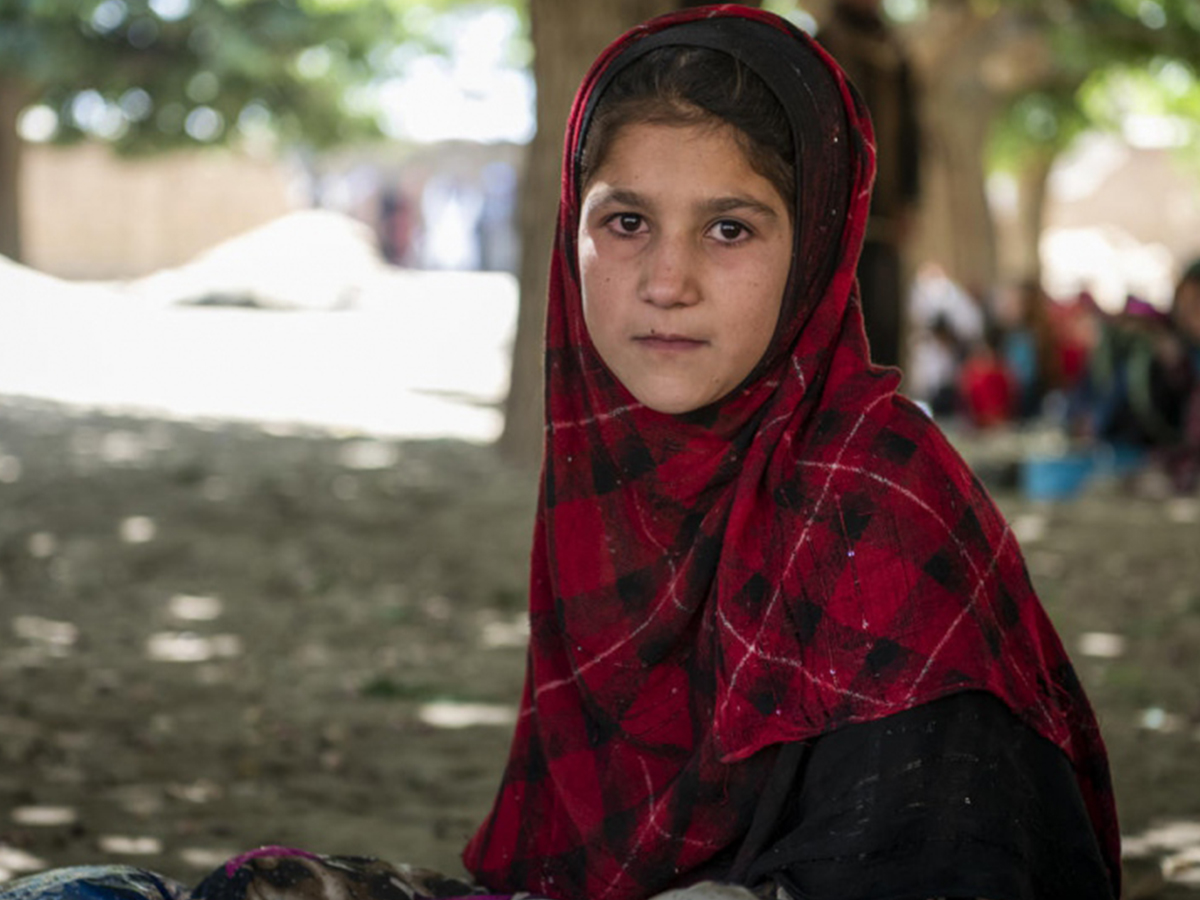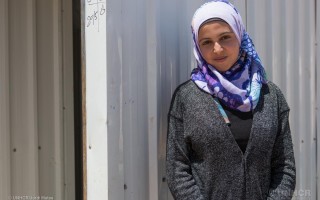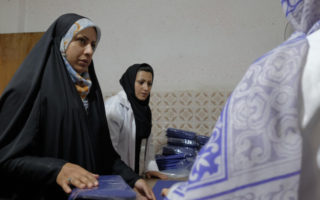
Pupils sit in the shade of mulberry trees in the village of Qarabagh, near Kabul, Afghanistan. © UNHCR/Claire Thomas
A UN-funded school building gives 500 children in a village north of Kabul a better chance at finishing their education.
At 12, Mursal is the only girl in her sixth grade class.
Over the years, all of the other girls – and several of the boys – dropped out to help with household responsibilities, start work or marry.
Though Mursal has managed to stay in school, it has not been easy.
Her class only recently moved out of tents that constantly had to be patched due to damage from the rain, snow and wind. The tents were crowded, and constantly damaged. At one point, during the winter, classes had to be suspended for three days due to the fact that rain and snow would seep into the tents and turn the dirt below them into slippery mud.
Mursal and her classmates now sit on a simple tapestry under a mulberry tree as their teacher goes over their multiplication tables in Pashto.
“I love Science and English,” she says as the wind sends gusts of dirt into the faces of the 520 students gathered in the field that houses this makeshift school.
“They say, ‘What school? Why should we send them out in the open so they can get sick?’”
The fact that Mursal has made it this far into her education, despite being forced to study in tents and open fields, is quite a feat. Though Qarabagh is a short drive from the city of Kabul, it faces serious security challenges.
In fact, the difficulties facing Mursal and the other students at the school — including 200 other girls — are representative of several other issues plaguing the education system in Afghanistan.
Last year, UNICEF reported that of the 3.7 million school-age Afghan children out of school, at least 2.7 million were girls. Globally, at secondary level there are seven refugee girls for every 10 refugee boys enrolled.
Mursal knows she was lucky, several of her female classmates were pulled out of school to marry, while others had to start contributing to the household chores. In other parts of the country, girls are often the first students to be pulled out of school when the security situation deteriorates.
This combination of cultural expectations and poor security has had a devastating effect on education in the country. A 2016 survey conducted by the European Union and Afghanistan’s Central Statistics Office found that only 21.7 percent of girls are enrolled in either formal or informal education.
This is why Mursal’s family support is so important. It is not just her parents that encourage Mursal to pursue an education, her brother, Fahimullah, who had to drop out of school to work as a day labourer, is one of her biggest champions.
He is proud that his little sister has the chance to pursue her dreams, something he was not able to do himself. He was in the 11th grade when his parents told him something thousands of young Afghans hear every day — they must contribute to the family’s household expenses.
What Fahimullah, and other members of the Aka Khail community now want is for the children of the village to finally study in safe, warm classrooms with proper desks and chairs.
Investing in the education of refugees, the internally displaced, and those returning to their homelands, is the most powerful way for them to achiever self- reliance. It is also central to the future prosperity of their countries, or the places that have welcomed them.
Currently, UNHCR, the UN Refugee Agency, is working to construct a school building that would increase the capacity of students from 520 to some 1,000 boys and girls from the area.
“They could become the doctor or the lawyer or the engineer who will fix this country.”
Malyar, 23, is one of only three proper teachers at the school.
He, and the other teachers, repeatedly approached parents in the area to send their boys and girls to the school, but they always received the same answer.
“They say, ‘What school? Why should we send them out in the open so they can get sick in the mud and rain and the heat?’”
Malyar accepts a merger salary of 6,000 Afghanis (US$77) to teach the students, but he says he is willing to do it to help his community, which has long been ignored by the Kabul government.
“If we, as the adults, work for these children, they could become the doctor or the lawyer or the engineer who will fix this country,” he says.
The school building should be open within the next three months.
“This is our Afghanistan. We need a proper school to be built, and for that, we would all sacrifice everything,” says Fahimullah, proudly watching his little sister repeat math equations in Pashto.
The Global Refugee Forum – a high-level meeting in Geneva in December – will bring the private sector, humanitarian and development organizations, as well as governments together. It aims strengthen a collective response to refugee situations, among aims is designing innovative and sustainable ways to support refugee education in places including Afghanistan.
Originally published on UNHCR on 24 October 2019





